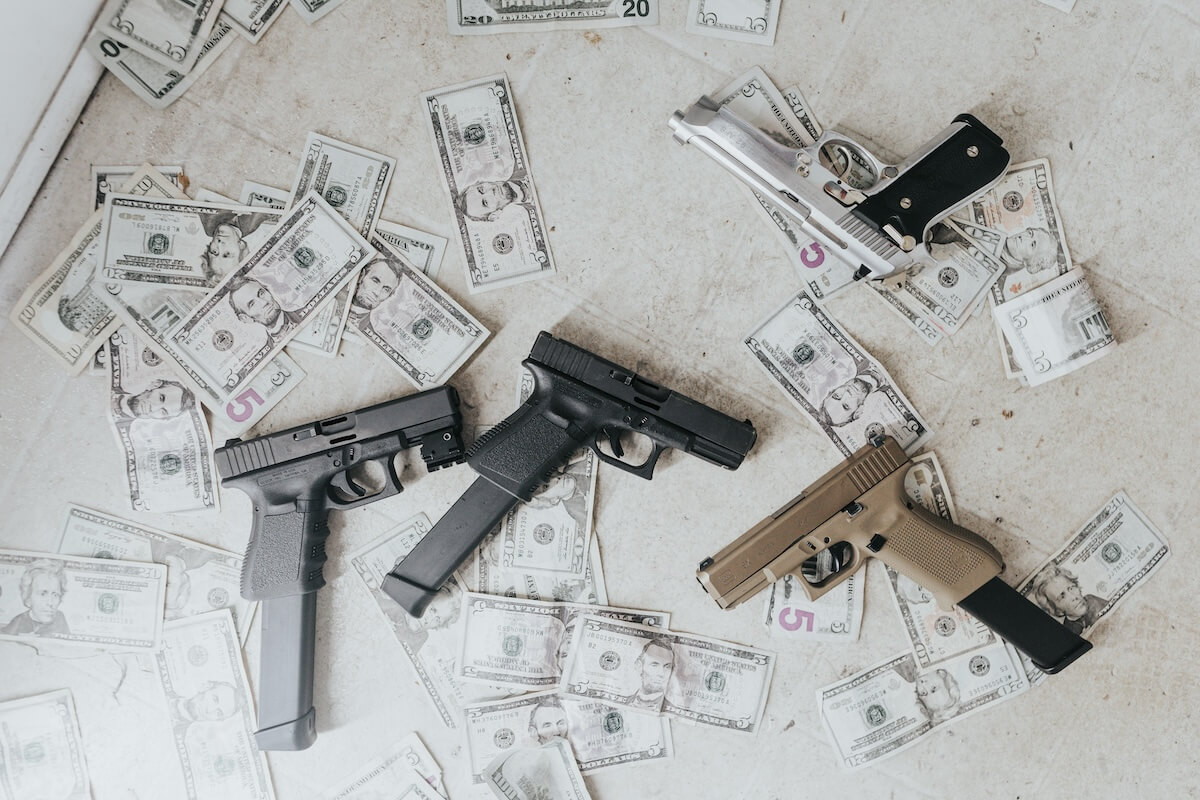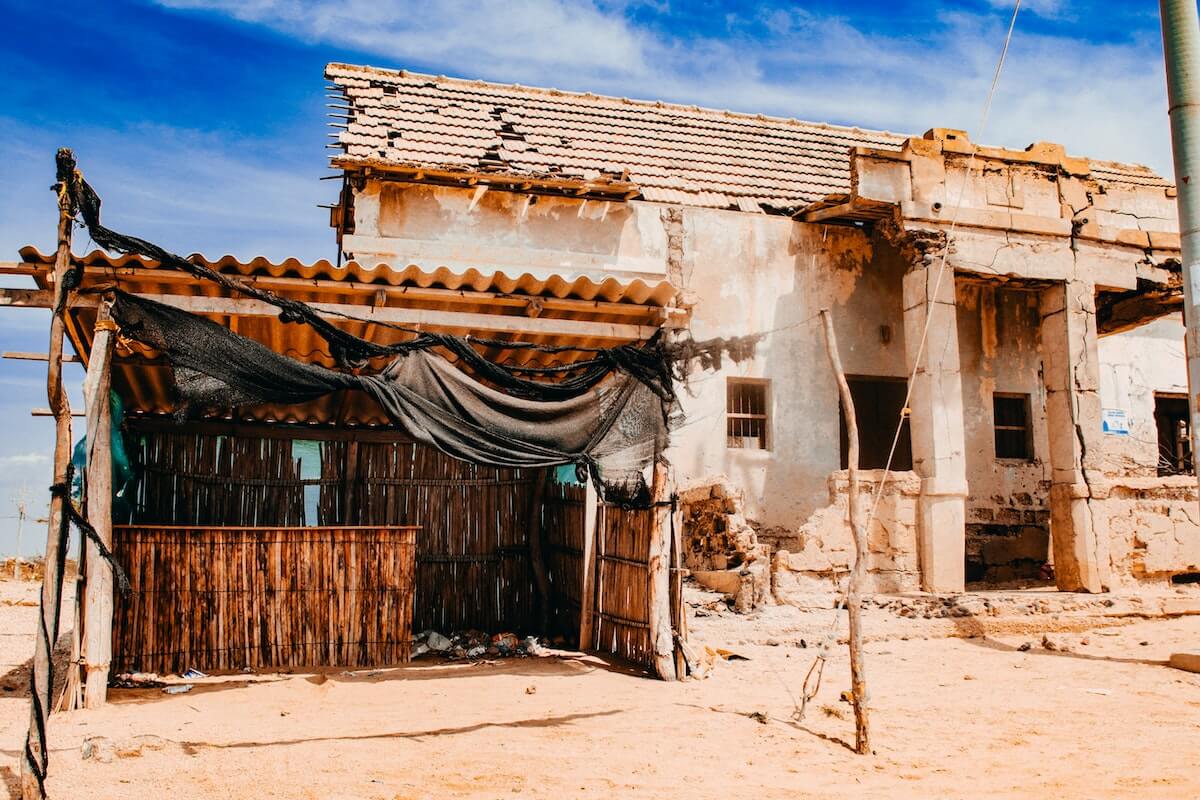A Better Tomorrow launched John Woo’s career into the stylistic bullet ballet kinetic filmmaking he’s known for.
The movie broke Hong Kong’s box office record. Its “gun-fu” dual-wielding pistol mayhem has been imitated ever since, including films like Desperado or The Matrix and video games like Max Payne.
Made on a low budget and released with practically no advertising power, you’d think the film was an indie explosion from a young director.
Instead, the source of its originality could be the U-turn it represents in Woo’s career.
After 10+ years of directing martial arts films and comedies, Woo was burned out and uninspired, suffering under a lack of creative control.
Luckily, legendary director/producer Tsui Hark (Once Upon a Time in China, Iron Monkey) funded Woo’s longtime project, A Better Tomorrow.
With the freedom to express his ideas, Woo’s new filmmaking style flourished and captivated audiences worldwide.
But that was the mid-1980s; this is today.
So is A Better Tomorrow a good movie?
The Plot of A Better Tomorrow:
Sung Tse-Ho (Ti Lung) is a high-ranking member of a Hong Kong triad. With his best friend and enforcer, Mark Lee (Chow Yun-fat), they run a successful counterfeiting operation.
Meanwhile, Kit (Leslie Cheung), Ho’s younger brother, is training at the police academy and courting his girlfriend, Jackie (Emily Chu). He is unaware of Ho’s life of crime.
When Ho’s sickly father (Tien Feng) pleads with him to leave the Triad, Ho agrees to stop after one last deal in Taiwan.
But when a betrayal makes the deal go south, it leads to Ho’s imprisonment and the death of his father.
Three years later, Ho is released from prison. Determined to change, can he rebuild his life without falling back into the Triad?
And can Kit, now a police officer working to stop Ho’s former associate Shing Dan (Waise Lee), forgive and accept him as his brother again?
The Rest of the Main Cast Includes:
- Shing Fui-On as Dao-Yi
- Kenneth Tsang as Ken
- John Woo as Inspector Wu
- Sek Yin-Tsi as Mr. Yiu
- Wang Hsieh as Boss Wang
- Chan Chi-Fai as ‘Little’ Wang
- Hing-Yin Kam as Inspector Mok
- Pierre Tremblay as Interpol officer
- Tsui Hark as a music judge
If you’d like to see the trailer for the film, you can do that over here on IMDB.
The Good Things:
Those Gun Battles, +3 Points
The picture delivers five action sequences of blaring muzzle flashes and rising smoke. Taking cover amongst a hail of gunfire is a must, but reloading is optional.
Characters are like minibosses in video games – a gunshot or stab wound is just a ping on their health meter rather than a killing blow.
But where many action films, like The Raid, have awed audiences with brutality, sheer audacious body counts, and scale, Woo succeeds with delicate staging – slow motion, close-ups, and style to the second.
The film features an iconic restaurant shoot-out that landed Chow Yun-fat forever in the cool zone. Its artistry is unlike many of its 1986 action film contemporaries.
The sequence starts by building anticipation with editing.
Inside the restaurant, the gangsters laugh, eat, and drink.
We follow Mark in slow motion. Walking down the hall, he furtively plants loaded pistols in two plant pots, presumably for later. Suddenly, his face changes from playfulness to dogged determination.
The wall to the gangster’s dining room slides open, the gangsters’ faces changing from enjoyment to surprise.
Then it’s a hellish flurry of bullets, blood spouting, plates bursting into pieces, and Mark overcoming the odds because, dammit, Mark is just too cool to fail. He even fixes the fit of his coat on his way down the hall to the weapons he left behind in the plant pots.
And I enjoy how the camera glides, fixed forward on the face of the inspector (director Woo in a cameo) at the end of the scene. It adds an otherworldly haze to the chaos that just occurred.
The boat docks finale trades the slow pizazz of the restaurant/hallway shootout for ~12 minutes of exploding barrels and tumbling bodies.
It lacks the intimate choreography of the restaurant or Mark’s assault to steal a tape of evidence. The thugs seem aimlessly spread out and taking cover, like video-game NPCs that pop out from a barrel to fire back at you but have no other tactical programming.
Still, it gives Mark a satisfying heroic turn and plenty of smoky shootout goodness.
Due to copyright issues, I couldn’t put in a YouTube clip of these action scenes. But if you want to search for it on YouTube yourself, I bet people have posted it there.
“Heroic Bloodshed”, + 2 Points
The blazing action pieces take the headlines, but they’re only half of the “heroic bloodshed” genre the film helped pioneer.
Though known as “A Better Tomorrow” in America, the film is titled “True Colors of a Hero.”
And while marketing materials like this were made to entice modern audiences, the heart and tone of the film are more like its original theatrical poster.
It looks like an imported retro album for sale on the streets of San Francisco’s Chinatown for a dollar or two (which may be appropriate, as actor Leslie Cheung was a famous Cantopop singer).
For all its violence, the film is a meditation on honor and duty. And boy, oh boy, does it love itself some male bonding.
The brothers argue dramatically in the pouring rain. There are long pauses in the edits as Ho looks endearingly at his lost brother, Kit, or business partner, Mark.
Mark even stops mid-gunfight to monologue to Kit about the need to forgive Ho for his criminal past and make amends, covered in blood yet on the brink of tears.
It’s drama that’s almost as over-the-top as the action. While you’d think it’s silly nonsense, the male-on-male plutonic romanticism, in this context, works.
Brother Mark, +2 Points
Burning dollar bills, joking about in English, or kicking ass while walking wounded, Chow Yun-fat, as Mark, is the film’s designated badass. His performance was the first of many Hong Kong action films and Woo collaborations. It’s fun to see the infancy of one of the biggest film stars in the world here.
The character was so popular in China that trench coats became known in colloquial Chinese as “Brother Mark’s Coat.” And his Alain Delon sunglasses have reportedly sold well overseas ever since.
Few films can pull off a third main character. Most filmmakers keep their pictures simple unless the movie is epic or blessed with a long runtime. A third character would be a comic relief wingman, a cool sidekick, or a love interest, and that’s about it.
Yet there are times, like when Mark seeks revenge for Ho’s betrayal or pulls off a heist, when we follow him as the hero for lengthy periods.
You wouldn’t imagine a Bruce Willis or Jason Statham vehicle where somebody else goes out and kicks all the asses. Yet here Mark is the dirty deeds done dirt cheaper of the group. And it’s a different path that works.
Dramatic Music, +2 Points
The soundtrack mixes orchestral sounds and synthesizers to great effect. The music captures the broodiness of the tone yet with the pulse of 80s action hurrah.
The Opening Titles bring an upbeat poppiness. I don’t associate the intriguing ping sounds as the voice of gangster films, but I love them.
Ho’s Theme features a harmonica refrain that echoes constantly throughout the movie, packing it with somber regrets and sentimentality. It has an “ah, Goddammit” quality that gets to you.
To mix things up, there’s Killer’s Theme. It’s the drumbeat the characters walk into the final shootout to.
And there’s the wildcard of Mark’s Theme, an even-more-upbeat rehash of the opening track.
It’s more fitting for an 80s rescue or an old disco than a cold-blooded gunman. However, in the film’s context, heroism is Mark’s game. So crack on theme, crack on.
Due to copyright issues, I couldn’t link to these songs on YouTube. But I bet if you searched there or on streaming services, you could find them and get a taste.
The Not-As-Good Things:
Those Males Are a-Bonding, but Am I Smitten? -3 Points
Despite the film’s bravado and emphasis on drama, its climax and story fell somewhat flat.
Vaunted action director Walter Hill said the secret to great fight scenes is caring about the characters and the stakes.
My issue was not being able to identify with Ho, Kit, and Mark at the beginning of the film as it laid out its character pieces.
This may not entirely be the film’s fault. A Better Tomorrow is hard to find in America, even on streaming. I watched what I believe to be the Mandarin-dubbed version rather than the original Cantonese-language version with subtitles.
Some lines might have been changed, altering the writing away from more dramatic poignancy. And when dialogue looks dubbed, it can wreck performances and/or story beats.
Still, the film’s opening could have used a few more minutes with all the players interacting. The movie establishes the bonds for us – Ho razzes his brother at the academy. He meets his girlfriend, Jackie. Mark is flashy and doing deals with Ho.
But I wanted more. Please show me a little more of the chemistry between Kit and Ho before things get messy.
Confusion, -1 Point
The film makes some strange edits. Occasionally, we jump from one location to another without a more guided transition to help us get the flow.
And maybe I missed it, but sometimes it was like the needed exposition wasn’t there.
When Ho returns from prison and is reunited with Mark, who is now permanently limping due to his leg injuries, he’s been relegated to living in the car park. This is because Mark’s status in the Triad has been diminished. Still, I thought he had become homeless since he cleaned the windows of Shing’s car so that he could toss him dollar bills.
Little moments like this dot the film. And while they certainly don’t sink it, it made a few plot changes harder for me to follow.
Go Watch A Better Tomorrow
Total Arbitrary Points Score: 5 Points
One of the most influential films in Hong Kong cinema’s history (and I’d argue in general cinema history), A Better Tomorrow came into this review with a hype train to contend with.
The film is as old as Top Gun (1986), and like that American classic, it’s been a launching pad for generations of action filmmakers.
Yet while its theatrics are intriguing, its gun battles stylistic and entertaining, I liked it but didn’t enjoy it as much as I had hoped.
When the music swoons and the brothers make extended eye contact, when Mark turns from escape to risking everything and rescuing his pals, I didn’t feel the emotional tug the film needed to give the moments gravity because I didn’t get into the bonding game.
Still, when you think of action movies released in the mid-1980s in the United States, A Better Tomorrow’s style, imitated to praise today, is all the more impressive.
While America was pumping out Stallone’s Cobra or Schwarzenegger’s The Running Man, muscled-up machos ready to blast or rip apart everything in sight, there was an elegant, pistol-in-hands revolution on the other side of the world.
While American action stars’ “beefcake” style is dated today, Woo’s evolution is still going strong, and his old films can almost pass for current.
So while this film’s points score would land it in my “should I watch?” rating, its bold style and unique tone of male bonding through “heroic bloodshed” get some off-the-page points (especially when I consider the potential translation issues that affected my watch).
I’d call A Better Tomorrow a must-see for action film fans worldwide.
A Better Tomorrow’s Legacy.
As we’ve touched on, A Better Tomorrow helped kick off the “heroic bloodshed” genre. But it did that not just for John Woo but for other filmmakers. The term itself was coined by Rick Baker in a magazine called Eastern Heroes, and he was referring to both works made by Woo and the very famous and influential director Ringo Lam.
More directors got into this genre, though.
Baker’s definition referred to Hong Kong action films that had lots of gangsters and gun play and not kung fu. And the themes were not just excuses to blast people but emotionally gripping. Loyalty, family, and brotherhood are always at work, with the thieves or gangsters in the film actually having strong codes of ethics.
The well for all this goes a lot deeper. The action style was imitated heavily in Hong Kong films through the 1980s and in the 1990s in lots of American films. For example, filmmakers like Quentin Tarantino and Robert Rodriguez took heavy cues from Woo’s films.
It also revitalized John Woo’s career and style, which has been seen in more action films than I can figure, including movies like The Matrix or John Wick.
Chow Yun-fat, who played Brother Mark, had a massive profile after this film. He was cast in a lot more heroic bloodshed movies, earning him the nickname “Babyface killer.”
But he also worked in a lot of comedies, including 1989’s God of Gamblers, which also broke Hong Kong’s all-time box office record.
He is, of course, Li Mu Bai in Crouching Tiger, Hidden Dragon.
In total, the actor has appeared in, as of this publication, over 95 films and 25 television series. So this film helped create one of the biggest stars in world cinema.
Ti Lung, who played older brother Sung Tse-Ho, had been, before this movie, prominent in the Shaw Brothers films. He was considered one of the best-known actors in Wuxia films (which if you don’t know, are the Chinese martial arts in ancient times fantasy movies. It’s the genre that John Carpenter made an ode to with the style of Big Trouble in Little China).
But in the 1980s, Ti Lung had left Shaw Brothers Studios, and his career suffered. But John Woo cast the recognizable actor in the role of Sung Tse-Ho, and the film was a smash, placing him back in the public filmgoing eye.
Lung would go on to play many roles and continue his successful career until what looks like 2019 so far.
Most notably to me, he was Jackie Chan’s dad in Drunken Master II, Wong Kei-Ying.
Leslie Cheung, who played Kit, was already a big Cantopop singing star and actor. And with A Better Tomorrow, his stardom only increased. As one of the most popular entertainers in Hong Kong, he continued acting in many big films, including vaunted director Wong Kar-Wai’s acclaimed Days of Being Wild.
In total, he released 40 albums and appeared in 56 films.
And for John Woo, well, you might know a bit about his story. For a few more years, he continued working in Hong Kong.
Up next was a sequel, A Better Tomorrow II, followed by films The Killer, Just Heroes, Bullet in the Head, Once a Thief, and Hardboiled.
And from there, as you may know, it was his transition to Hollywood, where he made films like Van Damme’s Hard Target and the Nic Cage/Travolta classic, Face/Off.
He went back to China to make ambitious epic movies like Red Cliff and The Crossing, but has come back to American-made for Silent Night and his remake of The Killer.
Well, that’s all I got. Thank you for reading.
Enjoyed this Post?
Thank you so much. If you’d like to get a ping when I have a new article, you can join my newsletter below.
Disclaimer:
This review’s factual information was gathered through online sources, like Wikipedia, IMDB, or interviews. Misrepresentations and errors are possible but unintentional.
Making art is hard. This is a fan’s blog. Any criticisms are meant to be constructive.




